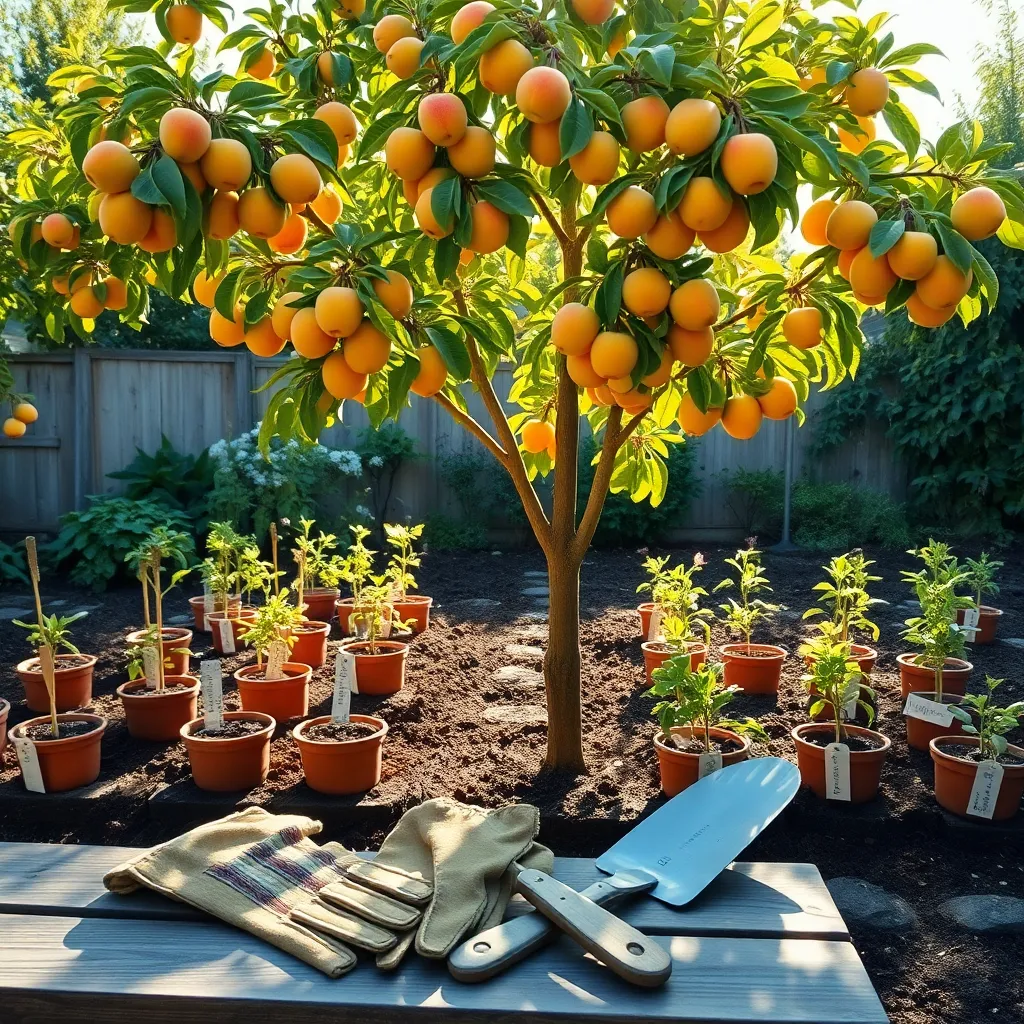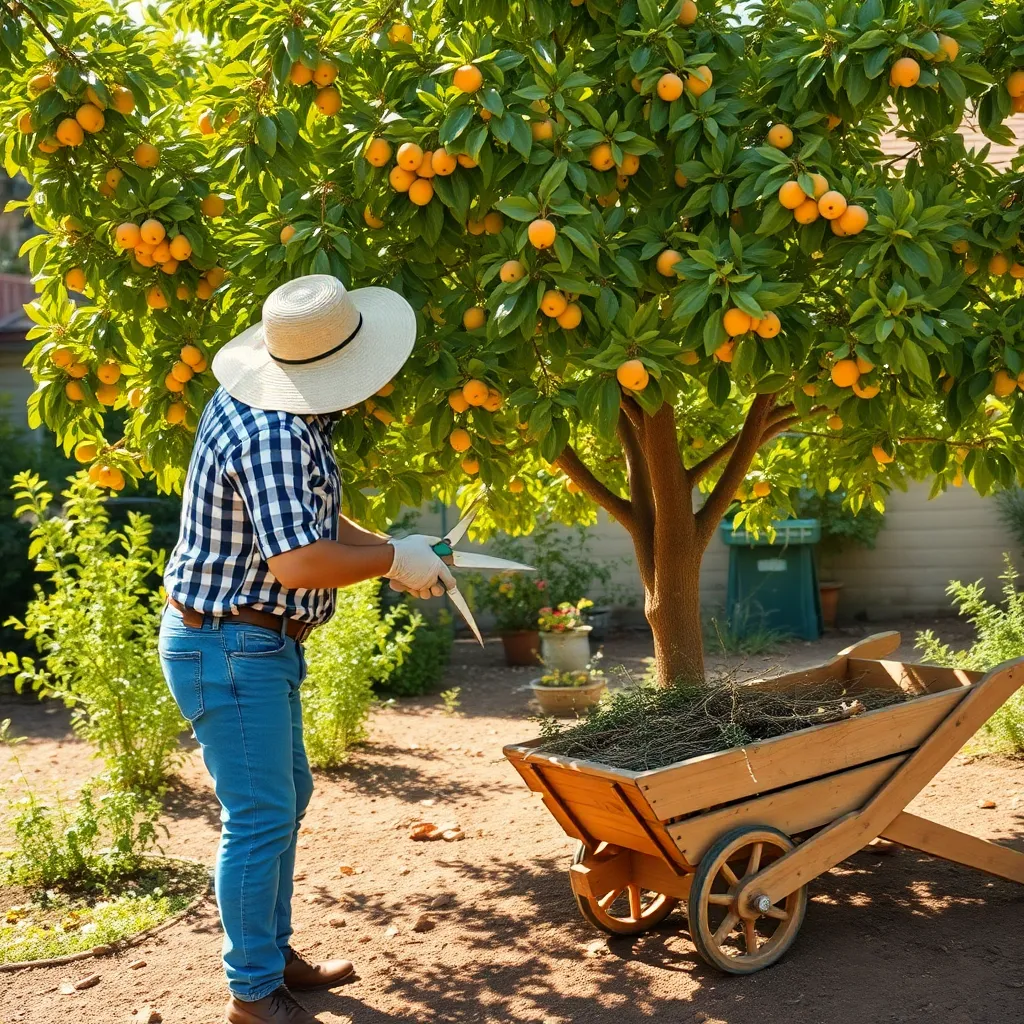Imagine stepping into your backyard and plucking a sun-warmed apricot, its flesh sweet and juicy, right from a tree you’ve nurtured yourself. Growing apricots at home isn’t just a gardening endeavor; it’s a journey that transforms your outdoor space into a personal orchard and rewards you with the freshest fruit imaginable. Whether you’re a novice gardener just dipping your toes into the world of fruit trees or a seasoned green thumb looking to expand your harvest, cultivating apricots can be an enriching and achievable project.
Apricots are more than just delicious; they’re a testament to your gardening skills and dedication. Their delicate blossoms herald the arrival of spring, and their fruit, a summer delight, brings joy to any table. This article will guide you through each step of the apricot-growing process, from choosing the right variety and site selection to planting, nurturing, and finally harvesting. You’ll discover practical tips and valuable insights that cater to both beginners seeking clear guidance and experienced gardeners looking to refine their techniques.
In the following sections, let’s delve into the specifics that will help you cultivate your own apricot tree successfully. You’ll learn about creating optimal soil conditions, understanding watering requirements, and recognizing signs of common pests and diseases. With a bit of patience and knowledge, you’ll soon see your apricot tree flourish, transforming your gardening landscape and offering a bounty of delicious fruit. The journey begins now, and with each step, you’ll find growing apricots at home both satisfying and delightfully rewarding.
Select a Suitable Apricot Variety

Choosing the right apricot variety for your garden is crucial to ensure a bountiful harvest. Consider your local climate as some apricot varieties are more cold-tolerant, while others thrive in warmer regions.
Research is key when selecting an apricot variety, as different types have specific growing requirements. For instance, ‘Moorpark’ is a popular choice that requires a long growing season and thrives in regions with hot summers.
For beginners, selecting an apricot variety that is self-pollinating can simplify the growing process. Varieties such as ‘Tomcot’ and ‘Autumn Glo’ do not require a second tree for pollination, making them ideal for smaller gardens or novice gardeners.
Soil quality is another important factor to consider when choosing your apricot variety. These trees prefer well-drained soil with a pH between 6.5 and 7.5, so amend your soil as necessary to meet these conditions.
Prepare Well-Drained Soil

Creating well-drained soil is crucial for the success of your apricot trees, as they thrive in conditions where water doesn’t pool. Begin by selecting a planting site with naturally good drainage, such as a gentle slope or a raised bed.
To improve drainage, incorporate organic matter like compost or well-rotted manure into your garden soil. This not only enhances drainage but also enriches the soil with nutrients that apricots need to grow vigorously.
Testing your soil’s drainage is a smart step before planting. Dig a hole about 12 inches deep and fill it with water; if it drains within a few hours, your soil is well-suited for apricots. If it takes longer, consider adding coarse sand or perlite to improve porosity.
For those with heavy clay soil, raising the planting area can help prevent waterlogging. Construct a mound or raised bed about 12 to 18 inches high, which will allow excess water to escape more easily, keeping apricot roots healthy and rot-free.
Plant in Optimal Sunlight

For apricots to thrive, it’s essential to plant them in a location that receives plenty of sunlight. Ideally, choose a spot that gets at least 6 to 8 hours of direct sunlight daily to ensure optimal fruit production and growth.
Sunlight plays a crucial role in the overall health of apricot trees, as it helps with photosynthesis and fruit development. If your garden area is limited in sun exposure, consider using reflective surfaces or pruning nearby shade trees to maximize the amount of light your apricots receive.
In addition to sunlight, consider the orientation of your planting site to shield your apricots from harsh winds. Strong winds can damage blossoms, so planting your tree on the south or west side of a building or fence can provide a natural windbreak while still capturing ample sunlight.
For gardeners in regions with intense summer heat, providing your apricots with some afternoon shade can prevent leaf burn and stress. Use techniques such as strategic planting of taller companion plants or installing shade cloth during peak afternoon sun to protect your trees.
Water Consistently and Moderately

To successfully grow apricots at home, it’s crucial to water consistently and moderately. Overwatering can lead to root rot, while under-watering may cause fruit drop or poor fruit development.
Begin by ensuring that your apricot trees receive deep watering once a week, especially during dry spells. This encourages the roots to grow deeper into the soil, which strengthens the tree and improves its drought resistance.
It’s beneficial to use a soaker hose or drip irrigation system to deliver water directly to the root zone. This method minimizes water waste and keeps the foliage dry, reducing the risk of fungal diseases.
For those in areas with heavy clay soils, it may be necessary to amend the soil with organic matter to improve drainage. Conversely, sandy soils might require more frequent watering, as they drain quickly and can leave the tree thirsty.
Prune for Healthy Growth

Pruning apricot trees is essential for promoting healthy growth and maximizing fruit production. To begin, remove any dead, damaged, or crossing branches, as these can hinder the tree’s overall health and fruit yield.
During the late winter or early spring, while the tree is still dormant, is the ideal time for pruning. This timing allows you to shape the tree structure without interfering with its growing season.
Focus on creating an open center or vase shape to enhance air circulation and sunlight penetration. This structure helps reduce disease risk and encourages even ripening of the fruit.
For more experienced gardeners, consider performing a summer prune after the fruit harvest. This technique can help control the size of the tree and improve the quality of the following year’s crop.
Conclusion: Growing Success with These Plants
As you embark on the journey of nurturing apricots at home, remember the five key relationship concepts we’ve explored: understanding the needs of your apricot tree, establishing a nurturing environment, consistent communication through regular care, patience through the growing season, and celebrating the fruit of your labor. Each of these principles mirrors the essential aspects of cultivating healthy, thriving relationships.
To take action immediately, choose one concept to focus on this week—whether it’s learning more about your tree’s needs or setting a routine for care. This simple step will lay a solid foundation for both your garden and your relationships.
Don’t let these insights slip away—bookmark this article now for easy access whenever you need a gentle reminder or a motivational boost. By integrating these nurturing practices into your daily life, you’re not only growing delicious apricots but also enriching your relationships with abundance and strength.
Remember, a flourishing relationship, like a well-tended garden, requires dedication and love. With patience and effort, you’re on the path to a bountiful harvest of connection and joy. Your journey towards relationship success starts today—take that first step, and watch both your garden and relationships thrive.
